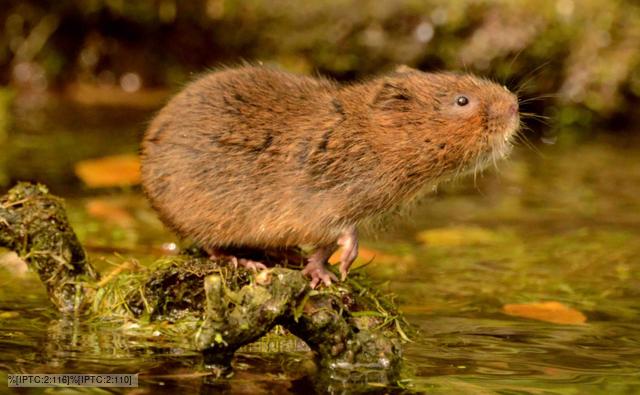The UK government has outlined its proposals on compensating for the loss of biodiversity through development.

Government proposals would mean developers would have to pay compensation equal to any damage to habitats
The idea of "biodiversity offsetting" is controversial, with some campaigners dubbing it a "licence to trash".
It means developers planning to build houses in environmentally sensitive areas would be allowed to go ahead if they could offset damage by paying for conservation activities elsewhere.
The environment department Defra has published a green paper on the scheme.
has published a green paper on the scheme.
 has published a green paper on the scheme.
has published a green paper on the scheme.
"Offsetting is an exciting opportunity to look at how we can improve the environment as well as grow the economy," said environment secretary Owen Paterson.
Commenting on the consultation, which will conclude on 7 November, he said: "We want to hear from developer and wildlife groups alike on how we can simplify the existing planning process while enhancing our natural environment.
"There is no reason why wildlife and development can't flourish side by side."
In England, six pilot areas were selected in 2012 for two year trials of a voluntary approach to offsetting through the planning system.
In March this year, a report from the government's Ecosystems Markets Task Force recommended that the offsetting scheme should be rolled out nationwide as a matter of priority.
Offsetting, it said, would "revolutionise conservation in England by delivering restoration, creation and long term management on in excess of 300,000 hectares of habitat over 20 years".
'Irreplaceable' habitats
Similar schemes have been up and running for many years in other parts of the world. But environmental groups have highlighted problems with the idea.
The Woodland Trust has campaigned against the inclusion of ancient woodlands in any offsetting scheme and it rejects the suggestion that the future of these habitats should rest on the proposed economic benefit of a given development.
has campaigned against the inclusion of ancient woodlands in any offsetting scheme and it rejects the suggestion that the future of these habitats should rest on the proposed economic benefit of a given development.
 has campaigned against the inclusion of ancient woodlands in any offsetting scheme and it rejects the suggestion that the future of these habitats should rest on the proposed economic benefit of a given development.
has campaigned against the inclusion of ancient woodlands in any offsetting scheme and it rejects the suggestion that the future of these habitats should rest on the proposed economic benefit of a given development.
The Trust's chief executive Sue Holden said she welcomed the fact this green paper recognised the "irreplaceable" nature of these woodlands. But she added: "We need to see a more robust use of planning law to support this, ensuring that irreplaceable habitats are treated as such.
"Offsetting should only ever be a last resort when all other avenues have been explored to avoid loss or damage.
"It is critical that any habitats created to compensate for loss are placed within the local area that suffered the original impact. Unfortunately, this still appears open to debate."
The Trust says that, in theory, losses to biodiversity in Kent, for example, could be compensated for in Derbyshire - ignoring the local value of habitats.
'Sound concept'
Meanwhile, Friends of the Earth  described the plans as a licence to "trash nature". FOE's nature campaigner Sandra Bell said that nature was "not something that can be bulldozed in one place and recreated in another at the whim of a developer.
described the plans as a licence to "trash nature". FOE's nature campaigner Sandra Bell said that nature was "not something that can be bulldozed in one place and recreated in another at the whim of a developer.
 described the plans as a licence to "trash nature". FOE's nature campaigner Sandra Bell said that nature was "not something that can be bulldozed in one place and recreated in another at the whim of a developer.
described the plans as a licence to "trash nature". FOE's nature campaigner Sandra Bell said that nature was "not something that can be bulldozed in one place and recreated in another at the whim of a developer.
"Instead of putting nature up for sale, the government should strengthen its protection through the planning system and set out bold plans to safeguard and restore wildlife across the UK."
Some critics also suggest that developers could be tempted to put money on the table to pay for offsetting and not feel obliged to go through the preliminary steps of trying to avoid damage.
Supporters say that despite potential difficulties, the overall concept is sound. They point to the fact that money received from developers for relatively minor damage could be pooled to create a much larger conservation area.
Mike Clarke, chief executive of the RSPB, also said offsetting should only be considered when other options have been exhausted. He said: "If government want to get this right, they will have to listen very carefully to the conservation community and heed our warnings.
also said offsetting should only be considered when other options have been exhausted. He said: "If government want to get this right, they will have to listen very carefully to the conservation community and heed our warnings.
 also said offsetting should only be considered when other options have been exhausted. He said: "If government want to get this right, they will have to listen very carefully to the conservation community and heed our warnings.
also said offsetting should only be considered when other options have been exhausted. He said: "If government want to get this right, they will have to listen very carefully to the conservation community and heed our warnings.
"They will also need to ensure that planning authorities have the expertise to assess proposals for offsetting, otherwise, it will go horribly wrong for wildlife."






